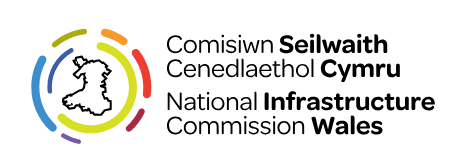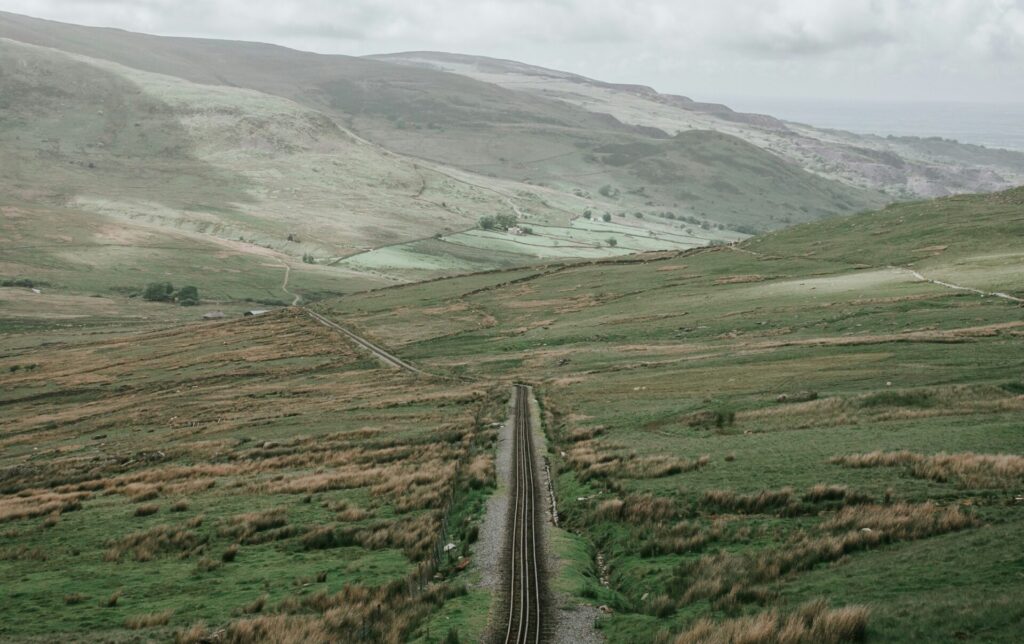Carole-Anne Davies imagines a future buoyed up by a progressive outlook on infrastructure.
Looking back to the 2020s, it is strange to think how far we’ve come, nearly eighty years and two pandemics later.
Through its ambitious ‘national conversation’, the apparatus of state in Wales had already, in the mid-2000s, hit upon the notion that health and well-being were critical objectives, intricately aligned to its early adoption of the core organising principle of sustainable development.
A further audacious move saw this small, bold country recognise, invest in and prioritise the importance of human capability and the means of connecting and mobilising it for equitable social purpose, quality of life and opportunity. The whole focus of government locked on creating the necessary conditions for maximising human capacity and capability – and to the enhancement of the environment which those humans need to stay alive, to reach their potential and to do so within communities that could thrive.
By focussing on building this capability Wales was viewed as pursuing a fantastical flight of fancy not rooted in the ‘real world’. Back then the ‘real world’ was one of failed systems, vast resource depletion, fractured politics, and a polarised public – oscillating between the spiralling frustrations of differing perspectives. Against the tide of technology and what was then known as artificial intelligence, governance came perilously close to little more than power games, fraught with the stresses of hanging on, not moving on.
We reclaimed the symbiotic relationship between humankind and the environment we need to survive and thrive.
In Wales, already perceived as eccentric in national character, a shift of focus to people – to their needs and how to create the conditions for good and purposeful lives in better balance with the planet – was made possible under the very cover this ridiculed eccentricity provided. There was profound thought about what people needed to maximise health and well-being, to be well educated, nourished and sheltered; to thrive within the realms of their individual capabilities and through connectivity.
The first advantage was captured after the first pandemic – an experience which saw learning harnessed and invested in different approaches and resulted in localities of resilience, better prepared ahead of the second and third pandemics. Localities had by then become centres of hyper-connectivity. Home and flexible working and learning via web, wire, cloud, and skin with local productive land and townscapes, people-centred health and learning pods springing up to serve, educate and employ the hyper-localised communities born from the first, now nearly mythical, Covid years.
After the first outbreak, subsequent dense green locales of clean air, intelligent streets and climate-responsive dwellings benefitted from demand-responsive communications, logistics and transport connection services, ready for the eventuality of the second wave.
By the time that second wave materialised, the small window of opportunity had been grasped to lock in the right level of design understanding, skill and commitment. We had understood the potential of surface transport and connectivity as well as the giant tentacled infrastructure that lay beneath. We recognised that technical compliance was not a strategic objective but a baseline obligation – a given. We therefore sought better problem solving, greater public and social value for our communities – urban and rural renewal became characterised by excellence in urban design, engineering, architecture, and landscape architecture. Placemaking was no longer thought of as something added to development but as the crucial core of making positive changes to where and how we could live, work and take leisure. We aimed higher and we reached further – understanding what it took to do exactly that and to deliver – not simply to say it but to do it.
We reclaimed the symbiotic relationship between humankind and the environment we need to survive and thrive. We committed to inclusive, collaborative approaches in a culture of quality and common purpose. We understood and created the conditions for bold creative leadership and clarity of vision.
Discussions and debates that drive Wales forward.
Join Wales’ leading independent think tank.
We resumed the bold endeavours of past generations, taking a leadership position and committing to quality, ambition and accountability, seizing economic opportunity through projects of a scale that stimulated and necessitated innovation. We invested public resources not for short-term lowest capital cost but long-term, highest quality, and public good. Systemically vital projects, services and structures for the long term overtook old models of capital focus and short-term gain. Fresh structural change brought about embedded fundamental rights to home, to clean air, energy, security and thriving, living landscapes.
We avoided a blighted environment of increasingly depleted and ever scarcer resources – avoided sacrificing the interests of future generations and prioritised wider public interest. In Wales we actively pursued the outcomes signalled in the legislation created for the wellbeing of future generations, embedding it in policy and delivery, setting in train the decarbonisation agenda and accelerating our transition to a zero-carbon economy. We collaboratively reshaped vibrant, inclusive, cohesive economies and communities, and took on the entrenched structural root causes of poverty in all its dimensions. To do all this we left behind concepts of blame and resentment. We looked to ourselves and to those who shared our vision and purpose.
We recognised that transport for people, goods and services had to become a defining element in shaping the whole of our environment – where and how we lived, what choices we could make and what opportunities could be accessed. We saw that our transport can shape a country, its economy and the health of its environment; how it can squeeze people’s lives to the scant edges of vast air-polluting highways and into vehicles we may not otherwise choose as the most convenient. Transport, distribution and communication systems were designed to the highest quality with comfort and efficiency prioritised, with new materials and efficient energy sources, accelerating the first decarbonisation era.
Powered with the elemental profits of the first renewable revolution, land use became recognised as a vital strategic tool and highly efficient, compact, connected settlements became a reality with fully integral and flexible social care, health, education, and services. While we saw its advantages we also recognised the carbon footprint of so called ‘AI’ and found ways to tame it to help drive this world of difference.
Now critical creativity and culture is woven into the very fabric of our reconnected communities; the globally vital stories of Wales can be learned anew, shared, remade and reshaped. Our most skilled creative thinkers can be regularly called upon to provide rapid policy, prototyping and delivery modes through mobilising our human skills and capability. These literally and metaphorically creative ‘brain cells’ grew from the huge drive for skills and inclusive education which galvanised thinkers, designers and makers to draw on human ingenuity to rapidly define, test, redefine and protype policy into strategy and delivery, keeping Wales in the position of environmental, economic, social and educational advantage. Expertise was welcomed and drawn upon, encouraged to bring challenge and analysis to data, evidence and information when considering how it might be applied.
The age-old drag anchors of territory and fear were quelled by a new and genuine openness and knowledge sharing.
In order to reach this place, this world we could hardly imagine possible even a decade ago, we distilled key principles, transformed our educational approach and invested in closing the vast skills gaps we had identified in the early 2020s. Creativity, humanities and languages were re-integrated with sciences – a breadth and depth of knowledge, understanding, courage, engagement and independence of thought, enabled ingenuity and challenged the conventional approaches and outcomes of old. At last, we saw how ideas die in the darkness of protective single interest and how they are brought to life when shared, promulgated and populated. The age-old drag anchors of territory and fear were quelled by a new and genuine openness and knowledge sharing. The complexity and urgency of our challenges meant barriers were trodden down, prejudices overcome, common purpose regained, conventions overturned.
In those months, days and hours of greatest threat, we mustered our courage and exercised a collective act of leadership and shared purpose at a scale of endeavour which, at last, equated to the scale of challenge.
This essay is part of a series commissioned in collaboration with the National Infrastructure for Wales.

All articles published on the welsh agenda are subject to IWA’s disclaimer. If you want to support our work tackling Wales’ key challenges, consider becoming a member.





